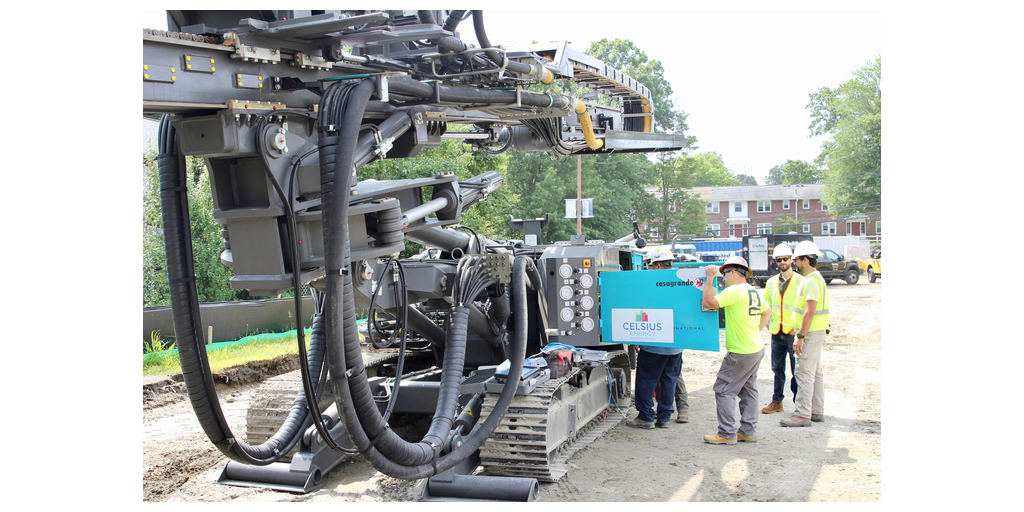Sign up for daily news updates from CleanTechnica on email. Or follow us on Google News!
Hydrostor, based in Toronto, has a plan to construct two massive long-term energy storage facilities, one near Sydney, Australia, near the site of a former mine, and another in Kern County, California, near Edwards Air Force Base. The one in Australia will be able to discharge 200 MW of electricity for up to eight hours and is expected to come online in 2027. The installation in California will be able to supply 500 MW of power for eight hours and will be completed before 2030. 4000 MWh of storage is a big number, the kind that makes people sit up and take notice, but the process is simplicity itself according to Curtis VanWalleghem, CEO and co-founder of Hydrostor.
“It’s a very simple system that just uses a hole in rock [plus] air and water,” he tells Inside Climate News. “And then the equipment is all from the oil and gas industry, so you don’t need new manufacturing or anything.” The technology actually uses some of the same techniques as pumped hydro storage. Hydrostor uses a supersize air compressor (that ideally would run on renewable electricity) to draw in air from the environment, compress it, and move it through a pipe into a cavern more than 1,000 feet underground. The process of compressing the air produces heat, and the system extracts that heat from the air and stores it above ground for reuse.
As the air goes underground, it displaces water from the cavern up a shaft into a reservoir. When it’s time to discharge energy, the system releases water into the cavern, forcing the air to the surface. The air then mixes with the stored heat that the plant stored and this hot, dense air is passed through a turbine to make electricity.
There are no details about how the heat is stored in the ICN article. On its website, Hydrostor says, “Heat is extracted from the air and stored in a proprietary thermal storage tank preserving for use later in the process. Saving the heat increases efficiency and eliminates the need to use fossil fuels during discharge.” The heat may be stored in unicorn fur for all we know. But for you skeptics out there (CleanTechnica readers tend to want more information rather than less), the company has been successfully operating a proof of concept 1.75 MW system that can supply electricity for six hours in Canada for several years.
Hydrostor is not the only player in the long term energy storage market, so the viability of the technology will be closely tied to how cost effective it is compared to its competitors. The California plant has a projected cost of about $1.5 billion, which would make it competitive with pumped hydro and other long-term energy storage technologies.
The Department of Energy says long-duration storage is an essential part of a fully decarbonized electrical grid. In 2021, it set a goal to reduce the costs of the technologies needed to make that goal a reality by 90 percent in 10 years. VanWalleghem believes there is room to push costs down as the company gains experience from these first few plants. The storage systems have a projected lifespan of about 50 years, which is an important data point when comparing it to battery systems, which have much shorter lives, he says.
Yiyi Zhou, an analyst for BloombergNEF, said Hydrostor is one of about 100 companies that focus, at least in part, on developing long-duration energy storage. Our readers may be familiar with ESS and Energy Dome. Hydrostor stands out, she said, because its technology is “relatively mature” and the company has also been one of the most successful in the space at raising money from investors.
Hydrostor Faces Challenges
The proposed project in California has gone through some significant changes since it was first proposed. Originally, Hydrostor had two proposals in the state but dropped one because of challenges in the permitting process, including some issues with building in a location overseen by the California Coastal Commission. The remaining project in Kern County has also gone through changes to the design and the location in response to feedback from the local community and from regulators. The California Energy Commission paused its review of the Hydrostor proposal last fall to give the company time to provide more details about its updated plan. The review process began again in March and could be complete as soon as this time next year.
The government of California and the California Energy Commission have made it clear that they want to build long-duration energy storage. The state has estimated that it will need 4 gigawatts of long-term energy storage capacity to be able to meet the goal of 100 percent clean electricity by 2045. Hydrostor and state officials want to see this project get up and running. If that happens, it could provide a showpiece to make the case for building many others. “We’re just looking forward to the growth, just getting these projects constructed and then start doing more, five, 10 projects at a time,” VanWalleghem said.
The Takeaway
Energy storage is critical to transitioning away from thermal generating stations powered by coal or methane. Of course, if coal and methane were not causing massive climate damage, no one would care. We could just keep those turbines spinning forever or until the fuel ran out. But, unfortunately, the Earth is heating up, which is leading to droughts in some areas, flooding in others, and daytime temperatures hotter than human beings can tolerate.
The only logical response is to transition to renewable energy, which in California mostly means solar. But solar stops working when the sun sets. Current battery energy storage systems can keep the lights on for about four hours, but after that, utility companies need to fall back on thermal generation, which means nuclear, coal, or methane gas facilities. The more electricity that can be captured during the day and then stored for use up to eight hours later, the closer we will be to a low- or zero-emissions grid.
The fact that Hydrostor relies upon techniques perfected by the oil and gas industry means there is a body of knowledge available to make this form of energy storage happen quickly. It also means there are a large number of workers already trained in how to use the machinery needed to create a Hydrostor facility, which negates the lament that renewable energy is a threat to American jobs.
Hydrostor seems to have a good idea about how to provide long-term energy storage. We will be following the progress of the company both in Australia and California and keep our readers informed.
Have a tip for CleanTechnica? Want to advertise? Want to suggest a guest for our CleanTech Talk podcast? Contact us here.
Latest CleanTechnica.TV Video
CleanTechnica uses affiliate links. See our policy here.





